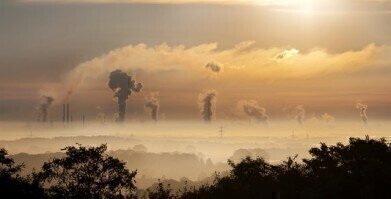Air Monitoring
How Will Scotland Monitor Pollution from Icelandic Volcanoes?
Aug 21 2016
A lot of people remember the Icelandic volcano eruption of 2010. Holiday-makers from that time certainly will, as it brought European airspace to a halt. Thousands of flights were cancelled and holiday-makers stranded after Eyjafjallaj?kull released a cloud of ash into the sky. This can also cause significant air pollution to Iceland as well as other countries. So what can be done?
Monitoring the air
The Scottish Environment Protection Agency (SEPA) was set up following several eruptions from Icelandic volcanoes. The 2010 incident was the most notable. With funding from the Scottish government, four stations have been set up by the agency.
They will monitor Scotland’s air quality, in response to these kind of events. A big part of the project is looking for contaminants like sulphur dioxide and particulate matter, which can be harmful if they go undetected. Prior to the 2010 eruption, Scotland was poorly equipped to deal with this kind of research.
“In 2010, most of the air monitoring stations were concentrated in and around the central belt of Scotland, with no sulphur dioxide monitors north of Dundee and no particulate matter monitors north of Aberdeen. This means that the volcanic plumes and emissions arriving from the north or west following the eruptions is Iceland, would have passed over the whole of the Highlands and Islands before being detected”, explained Colin Gillespie, an air quality specialist from SEPA.
The wider picture
It isn’t just testing the air that’s useful. During volcanic disruptions, samples of grass will be taken for examination. They can be assessed for fluoride contamination, which would be dangerous for plants and animals. Rainwater samples can be used too. With a network of volunteers collecting rainwater, SEPA can test for sulphur dioxide levels to see if there is a risk of acid rain. This can be hazardous for people, animals, plants and buildings.
Working together with the UK Met Office, SEPA also aims to develop a system of early notification for volcanic events. By inform the Scottish Government earlier, they can report to health authorities and local authorities on any issues of air quality.
A better understanding
Monitoring air quality and contaminants in the environment is a big step forward. It’s also important that we’re aware of other environmental aspects, like the ocean. Coastal monitoring is the practice of monitoring, regulating and controlling the impact we have on the coastal zone. It helps us better understand issues like wastewater and agricultural nutrient run-off. ‘Is Coastal Monitoring just a Drop in the Ocean?’ explores all of these concerns and looks at potential developments.
Digital Edition
AET 28.3 September 2024
September 2024
Business News - ENVEA announces acquisition of APAQ Group - SICK and Endress+Hauser sign strategic partnership - Efforts to curb gas flaring intensify amid environmental concerns Air Monito...
View all digital editions
Events
WEATHER • CLIMATE • WATER / EARTH OBSERVATIONS / GREEN ECONOMY
Oct 29 2024 St. Petersburg, Russia
Oct 30 2024 Hong Kong
Nov 05 2024 Toronto, Canada
Nov 05 2024 Rimini, Italy
Nov 06 2024 Ho Chi Minh City, Vietnam



















